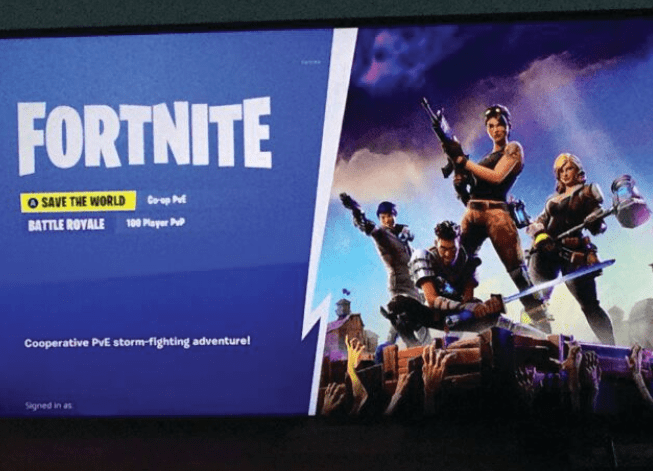Videogames and sports

author: jacob nelson | staff writer

Our generation’s addiction / Caleb Desnomie
Gaming versus actually playing
Are you addicted to Fortnite? This is a question Riley Sutter has become all too familiar with. Sutter was in Buffalo, New York in early June for the NHL scouting combine and found himself being bombarded with that exact question over and over.
Sutter responded, “There is definitely some guys around the league, some even on my team, that are pretty bad for it.”
He noted that it was keeping them up late and starting to become a “pretty big issue.” Rick Westhead tweeted that “Some NHL teams consider the video game a major distraction/obsession.” Since then, teams in leagues such as the OHL have reportedly asked their players to remove any social media posts involving Fortnite or any video game for that matter. An NHL insider also spoke to a reporter and said that a high draft pick for the league would never be chosen due to his obsession with the game [Fortnite]. However, some seem to feel that scrubbing the content from social media doesn’t get rid of the distraction, but rather hides it, and that teams should find other methods or ways of getting their players to limit their exposure to video games.
Let’s start with what Fortnite is and what it’s become. Fortnite is a massive, multiplayer, online game that would see upward of one-hundred players battle each other to the last man standing in its wildly popular “Battle Royale” mode. This free-to-play game has taken over the gaming world by storm and is generating absolutely Ludacris amounts of revenue; in May alone, it was reported by SuperData Research that the game had generated $318 million. And since releasing on consoles almost a year ago, it has brought in just over $1.2 billion. It has become so popular that people will spend hours watching live streams of their favorite players, including celebrities like Drake. So, it is easy to see why many people have taken to the game.
And this is where it starts to become dangerous. Since athletes such as Andrew Wiggins and Paul George, both stars in the NBA, have taken up the game, it has started to affect the lives of not just some famous celebrities, but is also finding its way into athletes’ lives, as well. Karl-Anthony Towns of the Minnesota Timberwolves said that he and Andrew Wiggins once stayed up until 6 a.m. playing Fortnite. But why is a hobby so dangerous? It is because it’s not just a hobby anymore. Video games have a huge stage in the eSport world and generate insane amounts of revenue. Halfway across the world, we see countries hosting major tournaments for games such as Overwatch or League of Legends, in which they are filling full-size sporting stadiums. And its because of this that we must now take a different look at video games.
It’s well known that some athletes have stipulations in their contracts involving what they are or are not allowed to do when they are not participating in team activities. In 2014, superstar quarterback Drew Brees of the New Orleans Saints, disclosed some details of his contract. At the time, Brees was promoting a new product, the Can-Am Spyder. He stated that he wasn’t even allowed to ride the product he was promoting due to his contract. The Saints told Brees that because of his value and importance to the team, that he could not ride motorcycles, as they pose to high a danger to his health. Brees, who is now one of the highest-paid athletes in the NFL, had no say in the matter. But its not just athletes, film studios are also taking aim at “protecting” their stars from off screen harm. Warner Bros. studios had apparently told Leto he was not allowed to participate in dangerous activities such as rock climbing.
But what do these activities have in common with video games? Video games are not an extreme sport in which you climb at high altitudes or move at high speeds. They are normally played while sitting in a chair, looking at a screen with nothing more than a handheld device to control. That’s not how some feel. So, I reached out to a local athlete who has played in sports his whole life at a variety of levels.
Tanner Zaharia, a wide receiver for the Regina Thunder said, “During my time playing football from RMF to Regina Rams and Regina Thunder video games have always been a focal point. Even if you’re not in the conversation and you hear someone talking about Fortnite, you can’t help but be intrigued and want to join the conversation.”
“When players on the team play video games, it creates chemistry. It is one way to connect and become closer. And it’s also a way to compete and have fun.”
When asked if he has noticed an increase in players getting involved with video games, he said, “Most athletes I know don’t take video games too seriously. Sure, when we’re on the sidelines or taking a play off, we may talk about the “dub” [win] we got in Fortnite or beating somebody in Madden, but it doesn’t take the focus away from the task at hand.”
One of many people’s concerns is that video games could ultimately create cliques or barriers between teammates that don’t share the same love for video games. However, when I asked him about this, he simply said, “During my time [on the team], cliques have never formed because of video games. Maybe based off past friendships or former teammates, but I believe that video games bring people together and gives us all something in common, therefore building chemistry.”
So, it looks like the world of professional sports is going to have this matter on their hands for the foreseeable future. Whether or not it creates focusing problems for athletes is still up for debate.









